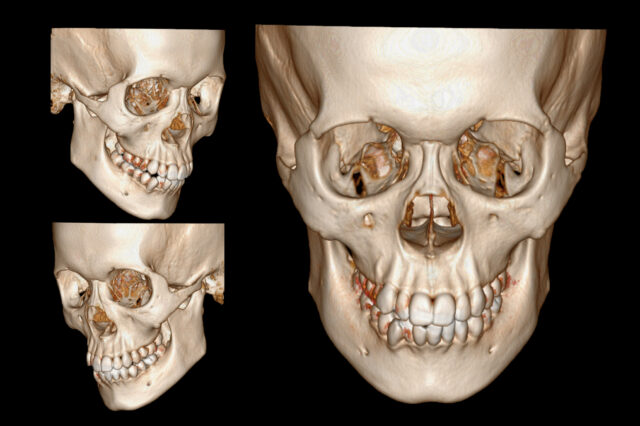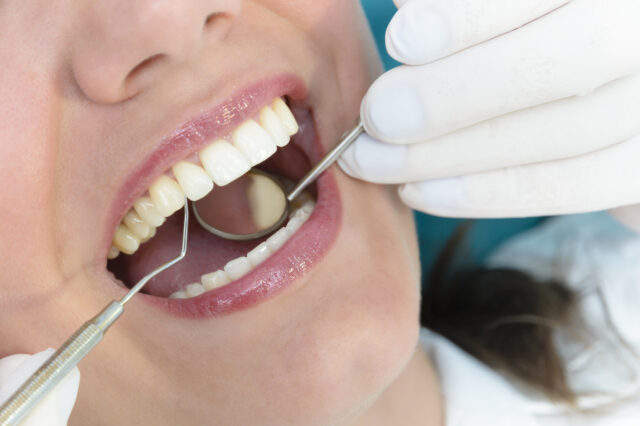Dental implants are surgically inserted fixtures used to anchor and support crowns, bridges, dentures, and facial prosthesis. Implanys use a biologic process known as osseointegration in which metals such as titanium bond to bone. Implants are given time to bond and heal before the prosthetic is attached to the implant.
Use in Orthodontics
Implants can also be used in orthodontics to assist tooth movements by creating anchor points where force can be generated. Applied force causes bone remodeling. These implants are smaller and do not fully osseoinegrate, allowing them to be easily removed.
Implants can either be fixed or removable.
Treatment Planning
Success of the implant depends on the health of the person receiving, drugs which impact the chances of osseointegration and the health of the tissues in the mouth. People with poor oral hygiene, who are heavy smokers, or are diabetics are as greater risk for gum disease complications that can lead to long term failure. Use of Bisphosphonate drugs can also affect the success of the procedure.
The position of implants is determined by the position and angle of adjacent teeth, lab simulations or by using computed tomography, CAD/CAM simulations and surgical guides called stents. The prerequisites to long term success of osseointegrated dental implants, are healthy bone and gingiva.
Procedure
There are five basic steps in an implant procedure:
- Soft Tissue reflection: an incision is made in the gingiva to expose the bone so the implant can be put into place. An alternate procedure removes a section of gingiva the size of the implant.
- Drilling at high speed: Pilot holes are placed to prevent burning or pressure necrosis.
- Drilling at low speed: The pilot hole is expanded with wider and wider drills. Water helps to keep the temperature low.
- Implant placement: The implant screw if placed.
- Tissue adaptation: The gingiva is adapted around the implant to create a thick band of healthy tissue.
Sometimes additional surgical procedures are needed for an impant. Bone grafting is done when there is too little bone for the implant to attach itself to. Soft tissue reconstuction is performed if there is not enough gingiva around the implant for long-term health.
Recovery
The time for osseointegration varies depends on the density of bone and the number of implants, rather than a uniform amount of time.
Like natural teeth, implants require cleaning. Teflon instruments should be used to remove plaque. The porcelain on crowns should be expected to discolour, fracture or require repair approximately every ten years, although there is significant variation in the service life of dental crowns based on the position in the mouth, the forces being applied from opposing teeth and the restoration material. Where implants are used to retain a complete denture, depending on the type of attachment, connections need to be changed or refreshed every one to two years.
Risks and complications
Post-operative risks
- Infection
- Excessive bleeding
- Flap breakdown (gingiva)
Osseointegration Failure
An implant is tested between 8 and 24 weeks to determine if it is integrated. There is significant variation in the criteria used to determine implant success, the most commonly cited criteria at the implant level are the absence of pain, mobility, infection, gingival bleeding, radiographic lucency or peri-implant bone loss greater than 1.5 mm.
Long-term Complications
Long-term failures are due to either loss of bone around the tooth and/or gingiva due to peri-implantitis or a mechanical failure of the implant. Because there is no dental enamel on an implant, it does not fail due to cavities like natural teeth. While large-scale, long-term studies are scarce, several systematic reviews estimate the long-term (five to ten years) survival of dental implants at 93–98 percent depending on their clinical use.


